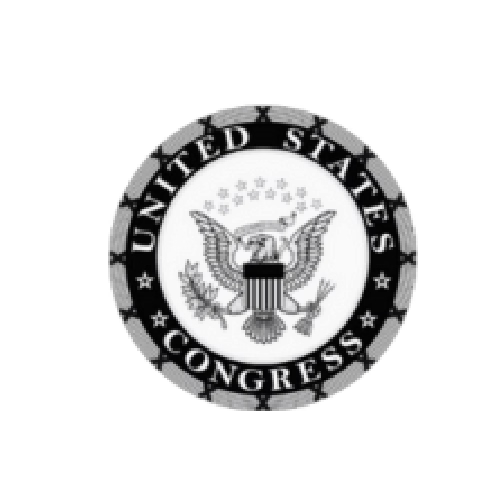The spotlight on the Federal Reserve (FED) has never been brighter. The wake of COVID-19 brings fears of a recession, and weariness of the overall economic impact on U.S. residents, and with the upcoming election, scrutiny of the FED’s actions has escalated. The public remains skeptical about whether recent reports suggesting the Fed might cut rates in September can be trusted.
This year, the FED was slated to make three rate cuts, yet halfway through the year, the U.S. has yet to see one. According to a newly released Apple News article, “The Fed is optimistic that cuts are likely in the near term, but we do not think it is willing to signal September is a done deal,” Bank of America economists wrote in a recent note to clients. This statement came just a week before Federal Reserve Chair Jerome Powell indicated in a press release that a September cut is likely.
In this discussion, we’ll explore the role of the Federal Reserve, its functions, and its economic impact, with a focus on what the upcoming rate cut means for multifamily investors. Discover how the FED’s decisions influence investor sentiment and market dynamics. By exploring how the FED functions and its dynamic with the 10-year treasury, we can gain insights into how its decisions directly influence investor sentiment, the strength of the dollar, and overall economic stability. Grasping these complexities equips investors with the knowledge needed to navigate the market, mitigate risks, and make informed investment decisions. As we continue to monitor the FED’s actions and their ripple effects, staying informed remains the key to successful investing in an ever-evolving economic landscape.
What Does the FED Do?
The Federal Reserve System functions as the central bank of the United States. In 1913, Congress established the Federal Reserve to create a more stable, flexible, and safer monetary and financial system for our country.
Three main components are working together to execute the country’s monetary policy.
Board of Governors
A federal agency in Washington, D.C. that contains seven governors appointed by the president and confirmed by the Senate. Governors serve 14-year terms, and the Chairman and Vice-Chairman serve four-year terms.
Federal Reserve Banks
The FED System consists of twelve regional banks located in major cities across the country, each serving a specific geographic region. These banks are governed by a nine-member board of directors, ensuring diverse oversight and localized economic insight.
Federal Open Market Committee (FOMC)
A committee of 12 voting members from across the FED system assists in setting monetary policy. They oversee the buying and selling of government securities, while also managing check collection and adjusting legal reserves between banks.
By working in tandem with one another, these three bodies ensure the U.S. has fiscal policy in place and is being regulated.
Core Functions of the FED
The Federal Reserve is responsible for supervising and regulating banks, providing banking services, and ensuring that consumers are treated fairly and receive adequate information when dealing with the banking system.
The FED has five key functions that promote the stability of the U.S. economy and financial system:
#1 Monetary Policy
The FED influences the money supply and credit conditions to promote maximum employment, stable prices, and moderate interest rates.
Promoting Maximum Employment
The FED promotes maximum employment by adjusting monetary policy to stimulate economic growth during periods of recession or slow growth to cool down the economy during periods of overheating. When the economy is sluggish, the FED lowers interest rates to make borrowing cheaper for businesses and consumers. This encourages spending and investment, which leads to job creation and lower unemployment rates.
Ensuring Stable Prices
Price stability plays a crucial role in maintaining a healthy economy. The FED aims to keep inflation under control by monitoring inflation indicators closely and adjusting monetary policy to keep inflation around its target rate, typically 2%. Moderate, predictable inflation is beneficial because it allows consumers and businesses to make long-term plans. If inflation is too high, it erodes purchasing power and can lead to an unstable economic environment. Conversely, deflation, a decrease in the general price level of goods and services, can lead to decreased economic activity.
A Look at Today:
After the pandemic, inflation surged, causing prices on essentials such as rent and food to soar. The Federal Reserve took action by raising interest rates to counteract the rapid inflation. From March 2022 to July 2023, the FED implemented 11 rate hikes to cool down the overheated economy. However, inflation has remained stubbornly high, currently sitting at 3%, above the FED’s target of 2%.
As of July 31st, 2024, Federal Reserve Chair Jerome Powell indicated that a September rate cut is likely if the economy continues on its expected path. This statement has a direct impact on investor sentiment, creating a cause-and-effect pattern that signals a potential drop in the 10-year Treasury yield, subsequently lowering the cost of capital. As new data reinforces the likelihood of a September rate cut, investor confidence will strengthen, leading to increased buying power and a more robust investment environment. This concept is known as the market pricing in, the forecast, or staying ahead of the curve.
Regulation and Supervision of Banks
The FED supervises and regulates financial institutions to ensure regulatory policies are met and to protect consumers’ credit rights.
#2 Financial Services to the U.S. Government and Financial Institutions
The Federal Reserve provides a range of financial services to the U.S. government and depository institutions. One of the key services is check-clearing, which facilitates the efficient processing and settlement of checks between banks. This service ensures that funds are transferred smoothly and promptly, enhancing the overall efficiency of commercial transactions. By acting as a central clearinghouse, the FED helps maintain stability and reliability in the financial system, supporting everyday banking operations and broader economic activities.
#3 Maintaining Financial Stability
The Federal Reserve actively monitors and engages in financial markets both domestically and internationally to minimize and contain systemic risks. It keeps a close eye on market activities, identifies potential vulnerabilities, assesses the health of financial institutions, tracks economic indicators, and analyzes global economic trends that could impact the U.S. economy.
By engaging in policy discussions and sharing information, the FED works to enhance the resilience of the global financial system. Its proactive approach to monitoring and mitigating risks helps maintain confidence in the financial markets, thereby supporting economic growth and stability.
#4 Promoting Consumer Protection
The Federal Reserve plays a crucial role in safeguarding consumer interests within the financial sector. This involves several key actions and responsibilities aimed at ensuring fair treatment, transparency, and accountability in financial services.
- Enforcing Consumer Protection Laws: To prevent unfair, deceptive, or abusive practices in the financial industry.
- Regulating Financial Institutions: By setting standards and conducting examinations of banks and other financial institutions, the FED ensures that these entities comply with consumer protection regulations.
- Educating Consumers: Provides educational resources and tools to help consumers make informed financial decisions.
- Responding to Consumer Complaints: Addresses consumer complaints and concerns related to financial institutions. It investigates issues raised by consumers and works to resolve disputes, ensuring that individuals receive appropriate remedies when their rights are violated.
- Promoting Financial Literacy: By fostering financial literacy, the FED helps individuals develop the skills to manage their finances effectively and make informed decisions about borrowing, saving, and investing.
- Advocating for Fair Practices: Working with policymakers to develop regulations that protect consumers from exploitation and ensure that financial products and services are accessible and transparent.
- Monitoring Emerging Risks: As new financial products and technologies emerge, the FED monitors these developments to assess potential risks to consumers.
#5 Community Development
Community development is a central focus of the Federal Reserve, aiming to foster economic growth, improve living conditions, and enhance the quality of life for communities across the U.S. The FED engages in various initiatives and strategies to support and advance community development efforts.
- Supporting Economic Growth: Through its policies and programs, the FED helps to stimulate local economies, create job opportunities, and encourage business development in economically challenged regions.
- Enhancing Affordable Housing: Working with financial institutions and community organizations to facilitate the development of affordable housing projects, improve housing quality, and ensure that low- and moderate-income families have access to safe and affordable homes.
- Promoting Financial Inclusion: Ensuring that all individuals have access to financial services is a key aspect of community development.
- Fostering Economic Resilience: Strengthens communities by supporting initiatives that enhance local infrastructure, improve workforce skills, and promote sustainable economic practices.
- Investing in Local Infrastructure: Investments in local infrastructure, such as transportation, utilities, and public facilities, are essential for community development.
- Providing Research and Data: The Federal Reserve conducts research and provides data on economic conditions and trends affecting communities. This information helps policymakers, community leaders, and organizations make informed decisions and develop effective strategies for addressing local needs and challenges.
- Supporting Small Business Development: The FED supports small business growth through initiatives that provide access to capital, technical assistance, and resources to help entrepreneurs and small business owners succeed.
- Addressing Economic Disparities: This involves identifying and addressing barriers to economic participation for disadvantaged groups and working to reduce income inequality and wealth gaps within communities.
How Does the FED Steer the Economy?
The FED’s decisions significantly affect the financial well-being of all Americans, shaping both business and consumer spending. To manage economic conditions, the FED employs various policies:
- Contractionary Policy: Raises interest rates and restricts the money supply to curb growth and reduce inflation.
- Expansionary Policy: Boosts economic activity during periods of slowdown or recession.
The Federal Reserve adjusts interest rates by changing the rate it pays on reserve balances held by banks at the Federal Reserve. Using monetary policy tools to manage the money supply affects the price, supply, and demand of money and credit. Three primary tools can help expand or contract economic growth:
Open Market Operations (OMOs)
The FED regulates the money supply in banks by buying and selling government securities in the open market. Buying bonds increases the money supply and lowers interest rates while selling bonds decreases the money supply and increases interest rates. OMOs are considered a finetuning tool because the FED can apply them to bonds of all maturities.
Discount Rate
The discount rate is the interest rate the Federal Reserve charges banks for short-term loans from its discount window. Since banks generally avoid borrowing at higher rates than those offered by the FED, this rate effectively sets an upper limit on the federal funds rate. By lowering the discount rate, the FED can increase the money supply.
Interest on Reserve Balances (IORB):
Banks receive interest on the excess funds they maintain in their reserve accounts at the Federal Reserve. The FED can adjust this interest rate, to influence how much excess reserve capital banks choose to hold. A higher IORB encourages banks to hold more reserves, reducing the money supply in circulation. Conversely, a lower IORB encourages banks to lend more, increasing the money supply.
Implementing Monetary Policy
Monetary policy has a wider impact on financial conditions, influencing stock and bond prices, long-term interest rates, and the value of the U.S. dollar. These effects can, in turn, shape economic activity and help the Federal Reserve achieve its dual mandate objectives.
How Does the FED Affect the Economy?
The Federal Reserve (FED) plays a crucial role in shaping the U.S. economy through its interest rate decisions, which have far-reaching effects on various economic activities. Here’s how the FED’s actions influence the broader economy:
Borrowing and Lending:
- Consumer Loans: When the FED raises interest rates, borrowing costs for consumers increase. This affects loans for homes, cars, and credit cards, making them more expensive and potentially reducing consumer demand.
- Business Loans: Higher interest rates also increase borrowing costs for businesses, potentially leading to reduced investment in expansion, hiring, and other growth-related activities.
Consumer Spending:
- Disposable Income: As interest rates rise, the cost of servicing existing debt increases, leaving consumers with less disposable income. This can lead to a decrease in spending on goods and services, which in turn affects economic growth.
- Savings Incentives: Higher interest rates can encourage consumers to save more, as they receive better returns on their savings accounts and fixed-income investments.
Business Investment:
- Capital Expenditure: Increased borrowing costs can lead to a reduction in business investment in capital projects such as new equipment, technology, and infrastructure.
- Operational Costs: Higher interest rates can increase operational costs for businesses that rely on borrowed funds, potentially leading to cost-cutting measures, including layoffs.
Stock Market:
- Valuation: Higher interest rates can lead to lower stock market valuations as the cost of borrowing increases and future earnings are discounted at a higher rate.
- Investor Behavior: Rising rates can shift investor preference from equities to fixed-income securities, such as bonds, which become more attractive as their yields increase.
Inflation:
- Demand-Pull Inflation: By raising interest rates, the FED can reduce consumer and business spending, thus cooling demand and helping to control inflation.
- Cost-Push Inflation: Higher borrowing costs can lead to increased production costs for businesses, which may pass these costs onto consumers in the form of higher prices.
Impact on Multifamily Real Estate through Interest Rates and the 10-Year Treasury
Influence of Interest Rates on Real Estate
As interest rates rise, the cost of borrowing increases. This creates a domino effect: due to the higher cost, investors are less likely to spend more for the same asset they would have purchased when rates were lower. The same applies to developers, as new construction also becomes more expensive, with materials increasing in price and higher debt needed to facilitate the construction process. As a result, fewer properties are built and construction starts are minimized. High rates can significantly impact development in construction loans. However, experienced developers find ways to navigate the higher costs and capitalize on the reduced competition in the new construction sector.
Rising interest rates can also affect mortgage rates and the overall affordability of housing. When mortgage rates are higher for single-family homes, fewer people choose to buy, leading to an increase in demand for renting. With fewer apartments being built and more people opting to rent, there can be an imbalance between supply and demand. This situation can be profitable for real estate investors with holdings or interests in areas where high occupancy rates are common due to increased demand for rental properties.
The 10-Year Treasury Yield
The 10-year Treasury bond plays a critical role in the economy. It represents the interest rate that the U.S. government pays when borrowing money for ten years. The 10-year Treasury bond yield influences the value of financial assets, affects borrowing costs, and indicates expectations for inflation and economic growth.
Key Insights about the 10-Year Treasury:
- Bond prices and yields have an inverse relationship. This means that when bond prices fall, yields rise, and when bond prices rise, yields fall.
- The 10-year yield is commonly used as a benchmark for mortgage rates and is also considered an indicator of investor confidence in the economy.
- When the yield rises, it indicates a reduced demand for Treasury bonds, signaling that investors are opting for higher-risk, higher-return investment options. Conversely, when the yield falls, it suggests the investors are being more conservative.
The 10-year Treasury Yield and the Impact on Multifamily Real Estate Investment
The 10-year Treasury yield can be influenced by various factors. One major influencer is the health of the economy. When the economy is strong, investors tend to opt for higher yields by investing in safer government bonds rather than riskier assets such as stocks. During uncertain times, like recessions, investors prefer safer investments, leading to an increased demand for government bonds and subsequently reducing yields. Inflation also plays a significant role in influencing the 10-year Treasury yield, as higher anticipated inflation can cause yields to rise. Additionally, decisions made by the Federal Reserve can directly impact the 10-year Treasury yield; rate hikes lead to higher yields, while rate cuts result in lower yields.
These changes directly impact multifamily investors in two ways. Firstly, the “risk-free” nature of government bonds and the difference in returns offered by multifamily investments can alter the perception of risk for investors, helping them determine whether the risk is worth taking. Secondly, the overall interest rate can impact the viability of deals. Deals that were once feasible with a lower cost of capital may now be under-leveraged due to requiring more upfront capital at a higher price, especially when debt costs are at all-time highs.
Key Takeaways
When the Federal Reserve raised rates in 2022 from zero to 5.5% (550 basis points), it led to a rise in the Treasury yield. As a result, bond prices fell and multifamily transactions came to a halt. The increase in interest rates doubled the cost of debt and reduced the overall potential profits. The 10-year Treasury note reached a high of 4.99% in October 2023, but the yields have since decreased, dropping to 4.16% as of July.
As multifamily real estate investors, it’s important to understand the correlation between the FED and the 10-year Treasury and how it impacts multifamily investments. Understanding these correlations can help investors manage expectations, mitigate risk, and plan for market trends. Having a concrete understanding of their roles and impact, investors can maximize their investments and make sound investment decisions.





















